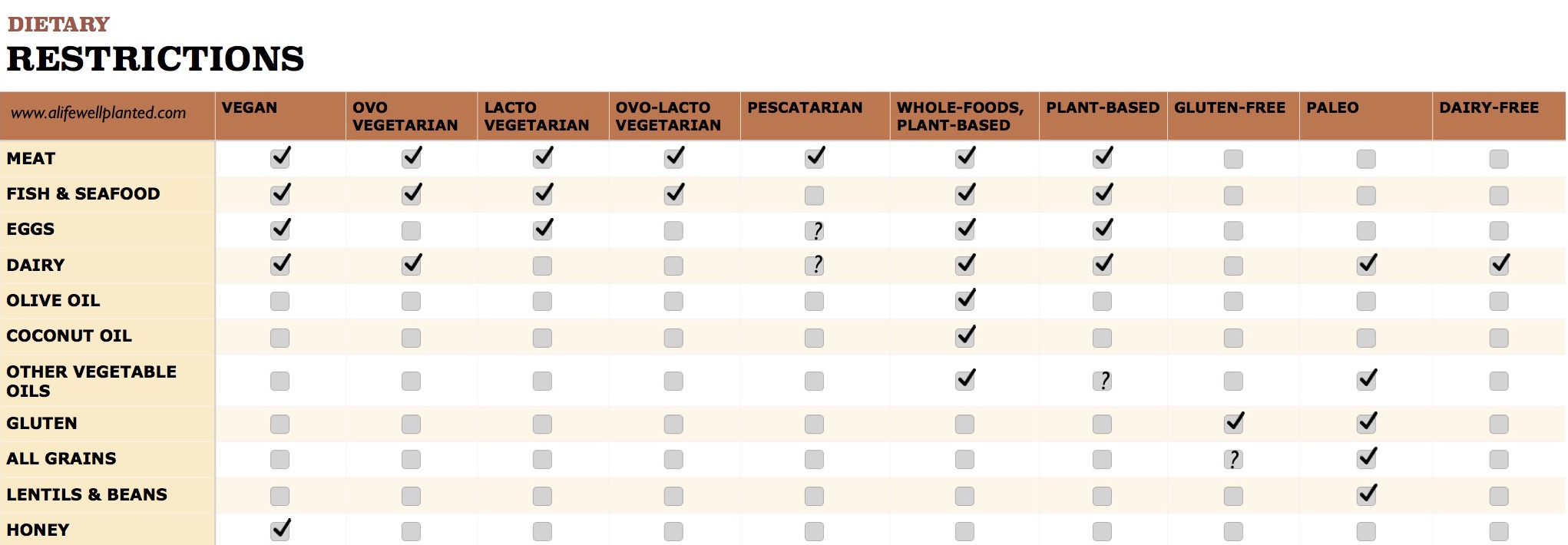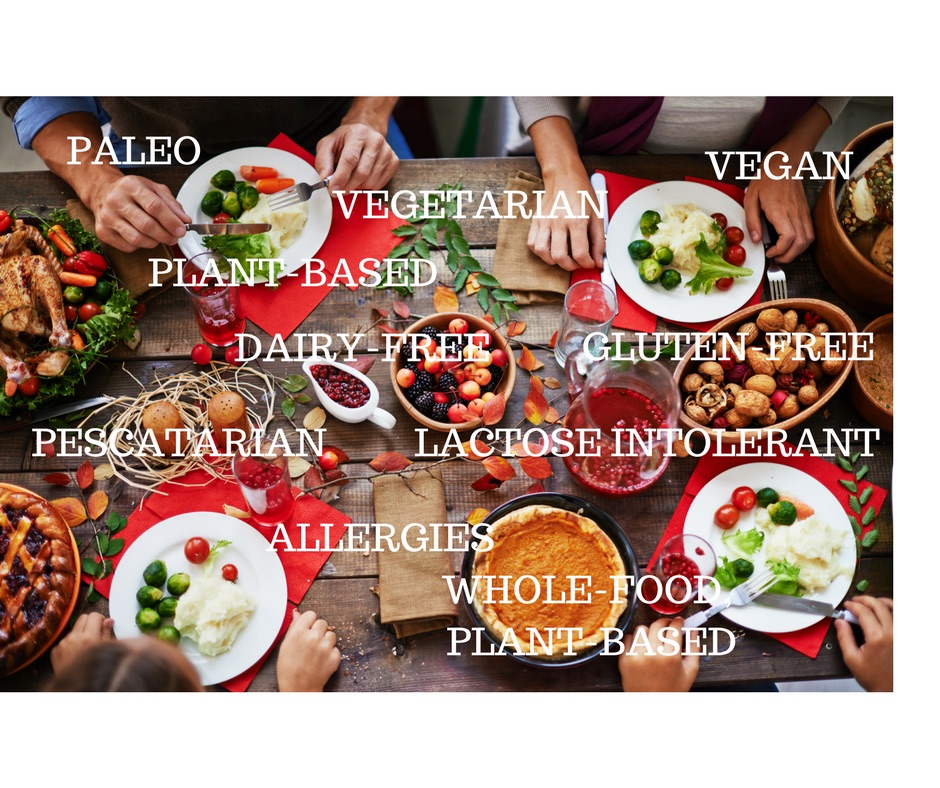Guest piece by: Judy DeLorenzo
Planning your Thanksgiving menu can be fun, but challenging. Then throw in a guest or two with dietary restrictions, and the task becomes even more daunting. If you don’t really know how to deal with different types of diets, you may be tempted to create your menu without worrying too much about the stray vegan or paleo of the group. But I believe that most hosts/hostesses would actually prefer to please everyone if possible; I’m assuming that describes you since you are reading this post. So my job is to help you plan a feast that everyone will be thank-full for, without too much additional stress or fuss on your part. Trust me once you read through you’ll see how painless this is going to be, and the payoff is that ALL of your guests will be full-filled. I know what it’s like to have to “eat around the edges” of a meal. I’ve been eating Plant-Based for 5 years and in the past I was a Vegetarian for 10 years. I get that when family comes together it’s mainly about the conversation, laughter and shared moments. But I’m always very grateful when there’s more for me to eat than just a salad as my holiday meal.
1. ASK – The first step is to ask your guests if they have any allergies or dietary considerations that you should be aware of. You may think you already know, but it doesn’t hurt to ask especially if you are having guests that you don’t see on a regular basis.
2. ACCEPT HELP IF IT’S OFFERED – So you’re determined to make the whole meal on your own. You ask about food restrictions and realize your cousin has adopted a gluten-free, vegan diet, BUT she offers to bring a gluten-free, vegan dish. What do you do? Say YES and realize that it’s a win-win situation! She doesn’t have to eat around the edges, and you don’t have to add more to your full plate. If this scenario doesn’t play out, don’t worry just read on!
3. BE CLEAR on what their style of eating does and doesn’t include. Here’s a graph explaining typical restrictions adopted by people following various diets. It’s worth noting that some people on a plant-based diet (not vegan diet) will occasionally eat meat or fish, especially if grass-fed, free-range, or wild-caught – so it makes sense to ask.
 Note that in the graph above “meat” includes beef, pork, poultry, lamb, venison, etc.
Note that in the graph above “meat” includes beef, pork, poultry, lamb, venison, etc.
4. SCRUTINIZE YOUR THANKSGIVING MENU – Okay, so now you know if guests have allergies or dietary restrictions. The next step is to make two lists:
- List guests that are on special diets and their corresponding restricted foods
- Make a list of each of the dishes planned for your menu. Beside each dish note if they contain ingredients restricted by a guest(s)
Armed with this information you can assess the situation and determine if guests on special diets will have enough options with your planned menu as is. Or will they only have one or two choices that won’t really constitute a holiday meal? Sometimes you can make a slight adjustment to your menu so everyone has enough options, and sometimes the easiest fix is to make an additional festive dish that doesn’t include any of their “no foods”. Don’t worry read on for recipe suggestions.
5. HOLIDAY WORTHY DISHES FOR RESTRICTED DIETS
I’m offering a sneak peek of my personal holiday favorite, Lasagna’s Gone Spiral, a recipe which will be in my upcoming cookbook. This recipe doesn’t contain any animal products, oil, or gluten, however, it isn’t grain-free since it contains rice noodles. My decadent Butternut Squash Soup doesn’t contain animal products, oil, gluten, or grains. Either of these recipes can be made a couple of days in advance and are so delicious that all of your guests will enjoy them. Who doesn’t like lasagna with their turkey or butternut squash soup as part of their holiday meal? Add one or both to your menu and enjoy the smiles. Subscribe below to receive both recipes.
6. TIPS FOR OTHER INCLUSIVE DISHES
Let’s talk potatoes since they are typically served on the holidays in one form or another. If making twice baked potatoes, for instance, with lots of butter and sour cream, simply bake plain potatoes for the non-dairy eaters in the group. Sweet potatoes are perfectly delicious when eaten plain.
If making a garden salad, consider leaving the meat, cheese, and dressing on the side so there’s the choice to opt out. Pure olive oil, lemon wedges, and apple cider vinegar are usually safe bets to have on hand for those that don’t enjoy all of the ingredients in bottled dressings.
Consider making a fruit salad or having fresh fruit and (raw) nuts displayed for those that don’t enjoy baked desserts, and/or for Raw Foodists in the group. Maybe have one or two herbal teas on hand, such as peppermint or chamomile, for those that don’t appreciate coffee.
NOTE: If someone has a true allergy, vs a diet preference, understand that it can be a life or death situation if they ingest something that they are allergic too. Some people can be so allergic to nuts, for example, that they react even if others are eating nuts or nut butter from far across the room. If this is the case, I suggest eliminating the allergen completely from your menu. There are also folks that give up specific foods that aggravate health conditions. Plan on discreetly letting these guests know if any of your dishes contain those offending foods; trust me they’d rather know.
I hope you’ve enjoyed these ideas for creating an all-inclusive, holiday feast. Many wishes for a happy holiday season, one that honors the unique spark within each of us.
Thanks to A Life Well Planted for this blog post!













